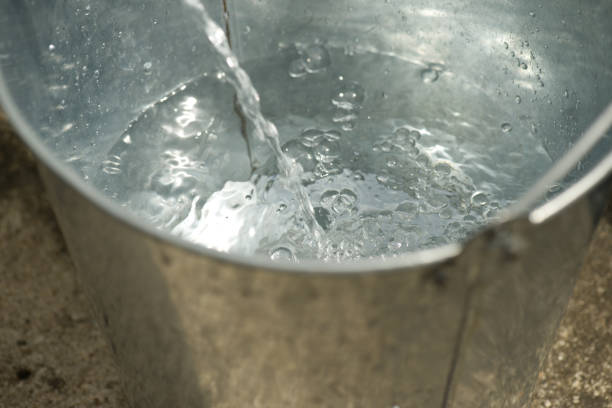Every homeowner with a sump pump should understand the importance of ensuring its proper functionality. Knowing how it operates in addition to when it might need to be repaired or replaced can save you from thousands of dollars in water damage.
Your sump pump plays a crucial role in keeping your basement dry and preventing water damage.
Here are simple steps to help you determine if your sump pump is working as it should:
1. Lift the Float
Your sump pump relies on a float, a plastic ball attached to the unit by a metal rod, to activate the pump motor. When water reaches a certain level, that motor will roar to life to prevent water from flooding the lowest space of your home.
To test it, lift the float as high as you can. If the pump starts, it's good to go. If not, then it’s time to start troubleshooting or contact your local plumber for repairs.
2. Pour Water into the Sump Pit
Simulate real-life scenarios by pouring water into the sump pit. Use a large bucket or trash can to fill the pit. If the pump starts, it's a positive sign. If not, then it's time to investigate.

If you already have water within your sump pump, do not be alarmed. It is completely normal for water to be present at all times within your sump pump. No signs of water in the pit of your sump pump should be a cause for concern.
How Often Should A Sump Pump Run
Think of your sump pump like the defensive backs of a football team. It’s there to protect your home’s foundation from becoming damaged by flooding. This defensive device will run as it is needed, which in terms of frequency entirely depends on the location and environment surrounding your home.
For example, if you live near a place where water collects like a creek or irrigation channel, then your sump pump might run occasionally when it rains outside or floods. This might also be the case if you live at the bottom of a hill where soil tends to collect more moisture.
As far as running time goes, your sump pump could run for just a matter of a few seconds at a time, and do this dozens of times throughout the day. This might be the case if you’re at the height of your area’s rainy season.
Between rainy and dry seasons, your sump pump might still run much less frequently and very briefly to maintain water levels within the pit and to protect your home.
Your sump pump needs to maintain a balance between these two different levels of functionality. If your sump pump is constantly running or not at all, then it should be an immediate cause for concern.
Key Signs Your Sump Pump Is Not Working
While the average homeowner might not check or listen for their sump pump to work properly each day, it’s vital to know when something could be wrong.
If you haven’t noticed your sump pump running lately, especially during the height of a rainy or dry season, then you need to check it out. Here are some key signs that something could be wrong:
- The Sump Basin Has Run Dry (And Keeps Running Dry) – If your sump pump basin or pit repeatedly runs dry, it may indicate a malfunction in the float switch. The float switch is responsible for activating the pump when the water level rises. Test your sump pump by manually lifting the float to ensure it kicks in and prevents potential water damage during heavy rain.
- The Motor Won’t Activate At All – A sump pump that refuses to activate might have issues with the float switch or the power source. Test your sump pump by pouring water into the pit. If the pump doesn't turn on, it's crucial to investigate and address the problem promptly to prevent potential water damage to your basement or crawlspace.
- The Motor Has Run For Over 22 Hours – An excessively running pump, especially just under a full day, suggests there might be excess water or a problem with the discharge line. Continuous operation can lead to pump failure and potential basement floods. It's advisable to inspect the discharge line for blockages and consider repairing or replacing the sump pump if necessary.
- The Motor Is Running While The Pit Is Dry – If the motor runs even when the pit is dry, the float switch may be stuck or faulty. Testing your sump pump by manually lifting the float can help identify if the pump kicks in appropriately. Addressing issues with the float switch ensures that the sump pump operates only when necessary, preventing unnecessary wear.
- Age Of The Sump Pump – The age of your sump pump is a crucial factor. Sump pumps typically last around 5-7 years. If your pump is aging, consider proactively replacing it to avoid potential failures during heavy rain or when water levels rise. Timely replacement can prevent basement floods and water damage.
- Foul Smelling Odors From Your Sump Pump – If foul odors emanate from your sump pump while it's running, it could indicate issues with the discharge pipe or internal components. Investigate the discharge pipe for clogs or damage.
Avoid a total sump pump failure before the next big rainstorm rolls in. If you notice any of these issues, get in touch with a professional plumber immediately.
Contact Anytime Plumbing For Sump Pump Repairs
Protect your home at all costs from flooding. Anytime Plumbing is available day and night to help you with sump pump repairs. Need a total system replacement? That’s no problem at all. Contact our plumbing team now to make sure your foundation stays safe from excess water.




